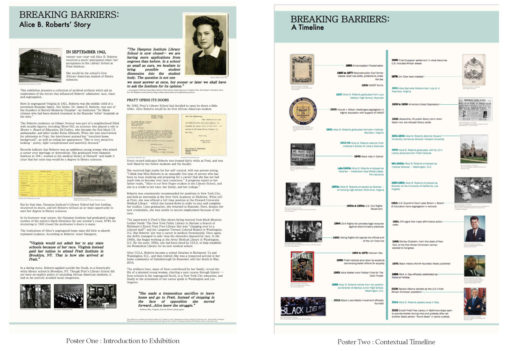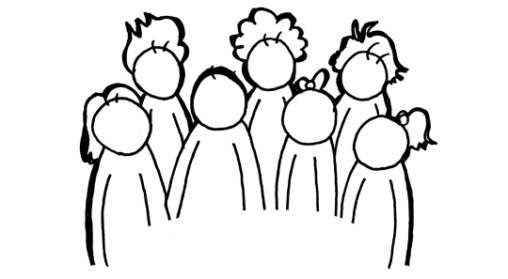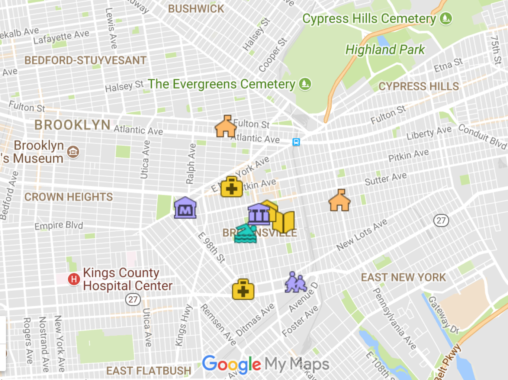Tag: archivesPage 3 of 5
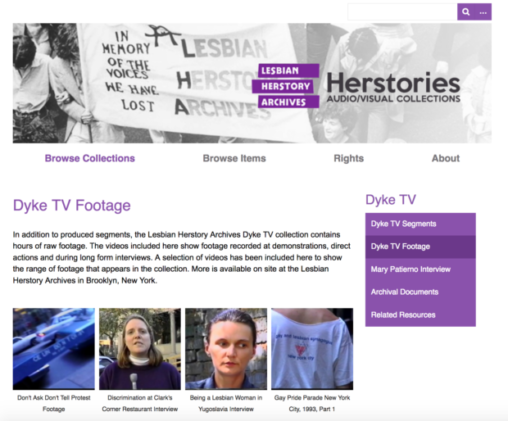
In this presentation, students from the course LIS 668 Projects in Moving Image and Sound Archives present their work in digitizing, curating and making available to the public the public-access television program DykeTV. The collection is housed at the Lesbian Herstory Archives and was reformatted from aging analog U-Matic video.
This paper examines incidents occurring in the 20th century onward, with particular focus, though not exclusively, on the destruction of cultural heritage institutions and sites during World War II, the breakup of Yugoslavia and subsequent civil wars, and the current conflicts in Iraq and Syria. Through these examples, I intend to discuss various preventive measures employed in the face of different situations, evaluate and compare the successes and failures in each instance, and suggest ways that further destruction can be avoided.
“This paper examines archival activism, from the originators of this line of thinking to the most recent conjectures. Adding some important concepts and thoughts about how archives and archivists can evolve an activist approach, making it evermore substantial by actively engaging in the public arena. I will take a more in depth look at how an activist lens and mindset affects diversity and identity formation, accountability and
social justice, in order to ultimately bring change through awareness and action. I will anchor these claims with examples from the considerable work that has and is being done by communities and archivists, both in America and abroad. But first I would like to share some of the scholarship on archival power and activism that has been done since Howard Zinn, as to provide a bit of a backdrop for the concept of archival activism.”
This project uses historical materials from the Brooklyn Collection archive on the creation of the Marcy Houses projects to explore themes of community and local history with secondary school students in the Brooklyn Connections program. By exploring current issues around housing through the lens of historical events, this group created a unit of study that engages students in culturally relevant instruction.
The “LibGuide for Film and Media Preservation” is a centralized location tool to serve the needs of beginning professionals working with and managing moving image media, analog and digital, in information environments such as archives, museum and special collections and libraries. In addition, the resource guide is designed as a supplement to graduate students taking relevant course work in library and informational science coursework, such as film and media collections. The LibGuide includes information resources including encyclopedias, dictionaries, and indexes, selected for their coverage across disciplines including varied topics as preservation, conservation and restoration, film history, and librarianship.
This paper will address the extremely influential role of archives in identity formation processes, and will explore how this asymmetry is magnified when considering marginalized, and specifically stateless, communities. This complex relationship will be further explored as it relates to depictions of Palestinians in two unique digital archives.
Libraries around the world have been concerned with the digitization of theirmaterials for the past two decades. A digitally available global library is growing, thanks to immense projects like Google Books, and large academic libraries that have been ceaselessly digitizing their materials as new scanning and data storage technologies continue to revolutionize the field. This presents a question of a huge amount of labor—who will do it?
First, I want this paper to shine a light on the actual labor performed by book
scanners for Google, and for other, smaller, library digitization projects. Manual labor continues to drive technological advancement, whether it’s in Apple’s Chinese factories where women construct iPhones for menial pay, or in Silicon Valley where Google’s scanning team works overnight to digitize the world’s libraries.
Second, I want to reveal the ways in which this labor goes undiscussed, both as
(likely) company policy at Google, and in smaller libraries, public and private, around world. Why does this labor remain hidden? The underground sensation that surrounds the Google’s scanning labor, and the way that the transformative labor of digitization goes unremarked, gets us close to the very old class conflict that is at the center of the new tech economy.
The first section of this paper will look at artist Andrew Norman Wilson’s
findings in his art pieces dealing with Google’s book scanning operations, and what we can know about labor conditions there. I then want to connect those findings to labor in smaller digitization undertakings at academic, public, and private libraries around the country. This leads to a discussion of automated robotic book scanners, and the future of library material digitization in the burgeoning convenience economy.
For Professor Cocciolo’s Fall 2015 course “Management of Archives and Special Collections” our class processed files relating to the founding of Pratt Institute Free Library School (now School of Information). These files were removed from the School decades ago by a professor who had hoped to write a book. The files had been returned years ago, but were brought to Professor Cocciolo’s attention this past year. Our task was to figure out the best possible way to process these “recovered files.” Since the official records of the School have a finding aid and are housed in the Pratt Institute Archives, we decided to figure out where the documents in the files might belong in the institutional archives. Using the series and subseries in the already established finding aid, we wrote a new finding aid in AtoM explaining the files’ history and our belief that these recovered files should be reintegrated into their rightful home in the institutional archives.
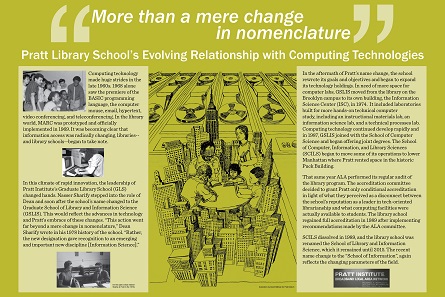
In this presentation, students from Management of Archives & Special Collections will discuss the exhibition and curation of records from Pratt School of Information, which is on-display now on the 6th floor. They will also discuss the conservation work of fragile late 19th century and early 20th century records.
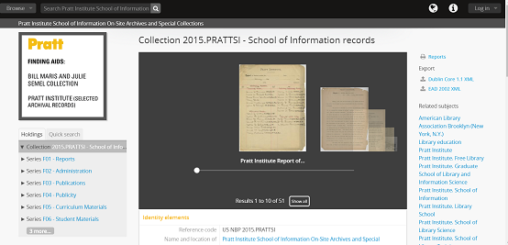
In this presentation, students from Management of Archives & Special Collections will present the work in processing the records of Pratt School of Information, including making appraisal decisions and creating an online DACS/EAD finding aid. Records cover the activity of the school from the 1960s through the 1980s.
Corporate Archives are important to American culture, and can also be a source of revenue for corporations as well as a way to connect with consumers. Corporate Archivist role is best as archivist and communicator.
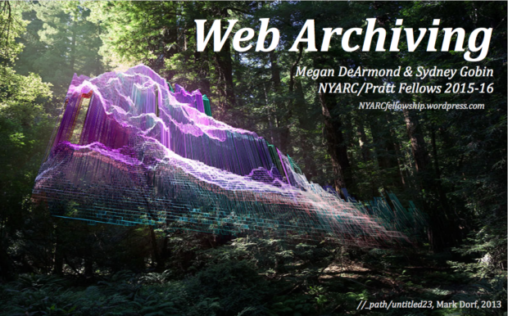
For the past two semesters, we have been working as NYARC interns located at the Frick doing web archiving of various types of sites (galleries, museums, catalogue raisonnes). We would like to share about the processing of web archiving using Archive-It as well as other new technologies such as Rhizome’s web recorder.
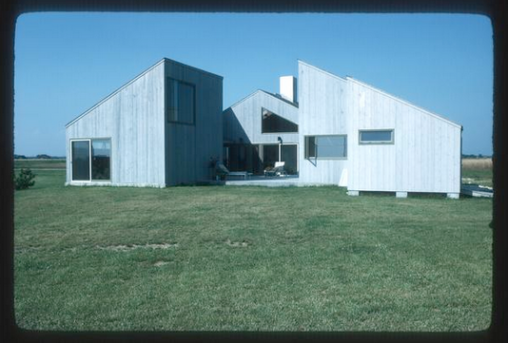
Christina, Mariaelena and Eugene will present the class’s work on archiving an architectural photography collection, specifically the Bill Maris and Julie Semel Collection. Work includes making enhancements to an online DACS/EAD finding aid, curating an exhibition of the photographer’s work, processing and rehousing the collection, and digitizing select photographs.
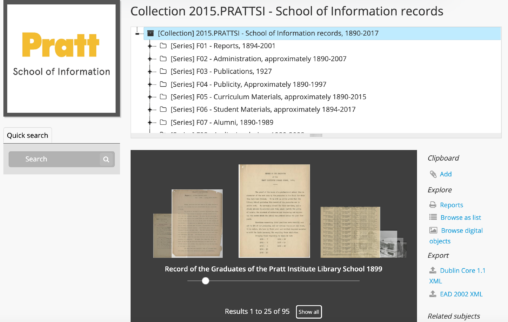
This presentation will discuss the processing and exhibition of the Pratt School of Information records. In this class-wide project from LIS 625 Management of Archives & Special Collections, students engaged in the work of the archivists, such as using archival standards like DACS and EAD and enacting preservation actions.
